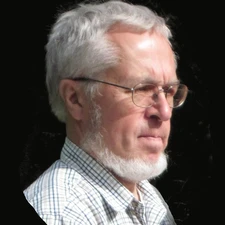Nikolai A. Tsyganenko

The 2013 Julius Bartels Medal is awarded to Nikolai A. Tsyganenko for his pioneering contributions to modelling the near-Earth magnetic field and his unflagging commitment to supporting the research community in the application of these models to solving key problems in magnetospheric physics.
Nikolai Tsyganenko from the St. Petersburg State University, is a world leading expert in data-based magnetospheric models. He wrote a number of seminal papers that laid out the fundamental groundwork to what we now know as Tsyganenko models for the magnetic field in the Earth’s magnetosphere. These semi-empirical models are based on a large number of in situ magnetic field observations, from the magnetosphere and the solar wind, virtually all that are available in sufficiently high quality. They use a highly advanced approach to describe the various current systems in the terrestrial magnetosphere. These models have been extensively used by the research community, in particular, to give individual single-point measurements in space a wider context and to link the observations made in different parts of the magnetosphere and ionosphere together.
Tsyganenko’s work has significantly shaped the way the space research community interpret the magnetospheric structure and topology, and through that also the dynamic magnetospheric processes. It is hard to overstate the physical significance of the Tsyganenko models, given that the nature of the magnetic field is the key to understanding the structure and dynamics of the Earth’s magnetosphere, such as the connectivity along field lines from one part of the system to another, as well as stresses and momentum transfer via the field. Better than any alternative model, they define conditions within the inner magnetosphere, a region where kinetic effects make the development of global first-principle models extremely difficult. Tsyganenko has also published a number of articles exploring mathematical tools, as well as physical aspects and consequences of magnetospheric models.
Tsyganenko’s leading role in magnetospheric modelling is widely recognised. His most popular publication holds an absolute record in the field of geomagnetism being cited more than 900 times. In total, his articles have been cited 4460 times (as of August 2012). Further, throughout his career, Tsyganenko has always been generous in sharing his results. He has made substantial efforts to carefully publish his work at a level from which the models can be reproduced and used in a variety of platforms. He has made his codes available to the entire research community, and has always been helpful and willing to advise in their use.
